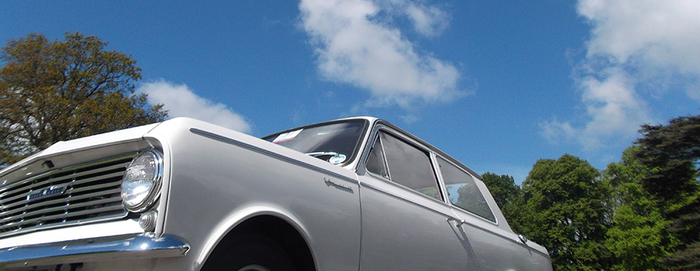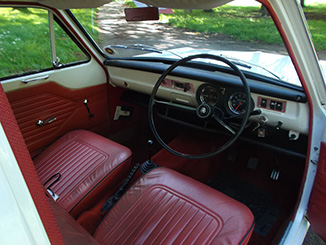Vauxhall Viva

UK Press Event, Luton

This was the first time I have ever driven a Viva HA, I have been around a bit, but never had the chance before to drive this classic Vauxhall. The Viva is equivalent to today’s Astra; although shorter in length it does not lose much interior space.
 The first Vivas were built at the new Ellesmere Port plant which came on stream in 1963, with the Viva being the first car to be produced at the plant. The Viva hit an important milestone 10 months after manufacturing commenced with 100,000 units being produced.
The first Vivas were built at the new Ellesmere Port plant which came on stream in 1963, with the Viva being the first car to be produced at the plant. The Viva hit an important milestone 10 months after manufacturing commenced with 100,000 units being produced.
The Viva was described as “The 1 litre car with a millionaire ride”. The Viva was priced at £527.7s.11d, and massively undercut its arch rival the Ford 100E which cost over £800. You could say this rivalry still exists today between these two companies.
The Viva is powered by a 1,057cc 4 cylinder petrol engine that produces 44bhp, which in today’s terms is tiny. Vauxhall don’t quote a 0-62mph figure, but after driving it around Luton it felt like it would take around three weeks, to say it is not quick is an understatement. The 1 litre engine is coupled to a 4 speed manual gearbox which felt positive and the gears were easy to find, it went from one to the next relatively easily.

The interior is surprisingly large, with enough room for five adults, and it has plenty of legroom. It did feel strange though getting in to the driver’s seat, reaching for the seat belt, and nothing there, no seat belts were available, or required by law in the 1960’s. It had wind-up front windows and front quarter-lights that allow air into the car without opening the windows, a good idea then and probably would be a good idea now, but they made it easy for the car thief to break in. The other thing missing from the interior was the now obligatory cup holders; there were none in those days.
Out on the road, it was a pleasure to drive, slow, but pleasurable. You have to allow much more time for just about everything: setting off from a roundabout, you just can’t “nip out” into the traffic, you need to give yourself plenty of room and that bit extra distance so you don’t get hit by oncoming traffic. Setting off from traffic lights can annoy drivers behind you as the Viva is not as quick off the mark as their modern day motors. But it is stopping that you really need to think, as the brakes are nowhere near as powerful as they are today, and braking distance is almost measured in miles as opposed to metres. It is a different way of driving and “keeping your distance” is a must. The steering wheel has a huge diameter, and the rim is very thin. You almost have to stretch out your arms to hold it, and it did feel very strange and of course there was no power assistance.
The length of the Viva is 12’ 10’’ or 3,911mm in metric terms, compared to today’s Astra at 4419mm. But the Astra needs that much more space to fit in all the modern systems, larger engines and safety equipment.

As we are looking back in to history with the Viva, it’s also interesting to see how Vauxhall has evolved as a company. It was founded by Scottish marine engineer Alexander Wilson at 90-92 Wandsworth Road, Vauxhall London in 1857. The company was originally named Alex Wilson and Company, then Vauxhall Iron Works from 1897. The company built pumps and marine engines. The first car was built by the company in 1903, a five horsepower single cylinder model. In order to expand, the company moved North to Luton in 1905, when the modern name of Vauxhall Motors was adopted.
On 16th November 1925, Vauxhall was acquired by General Motors for US$2.5 Million. During World War 2, car production at Luton was suspended to allow Vauxhall to work on the new Churchill Tank of which over 5,600 were built. Luton also produced around 250,000 trucks for the war effort
The Viva was Vauxhall's first real venture into manufacturing compact cars after World War 2 and it was nice to drive an important part of British history, a great car, although very few of the 307,738 built at Ellesmere Port are still with us.
Martin Ward, Manufacturer Relationship Manager


